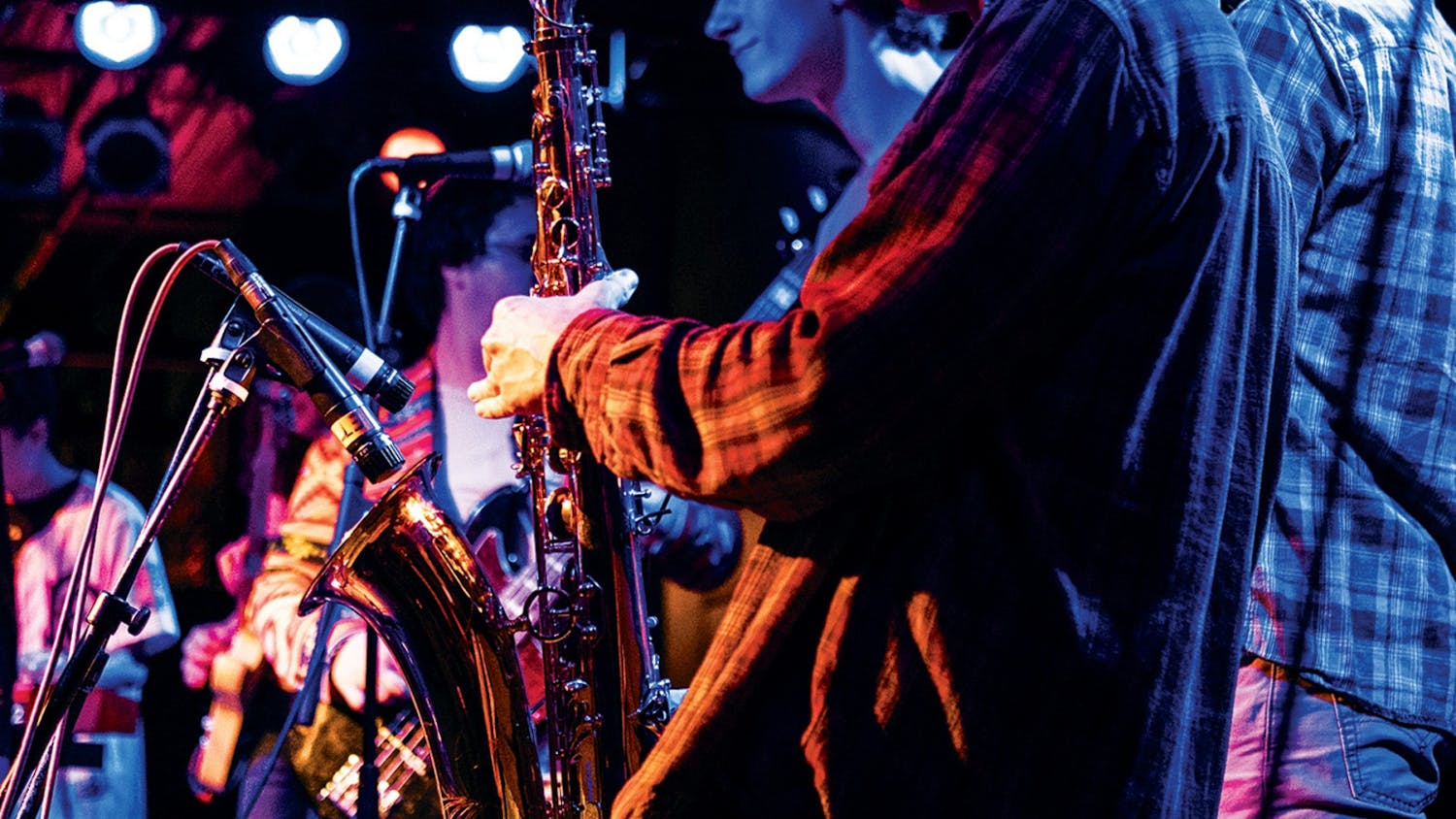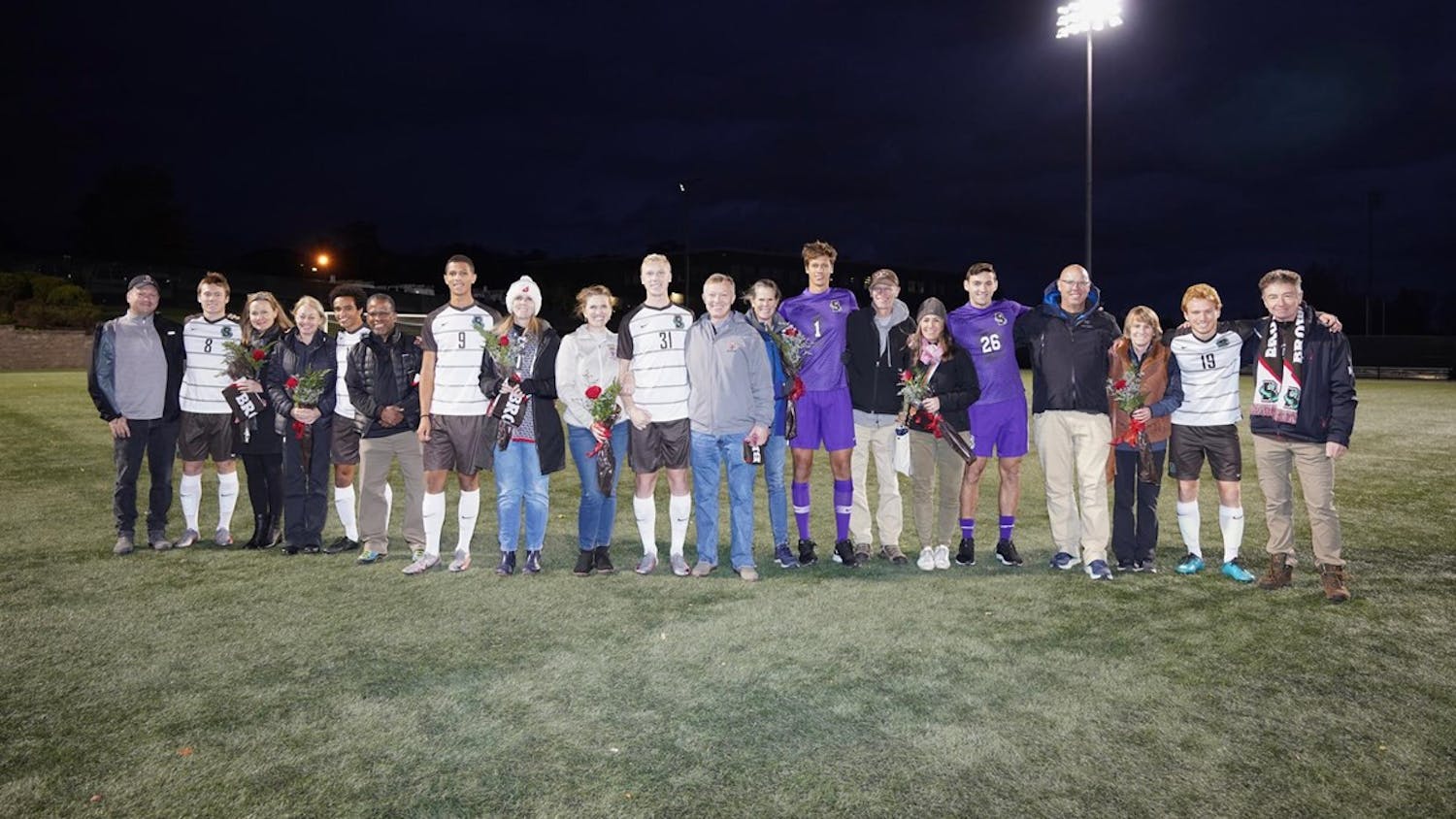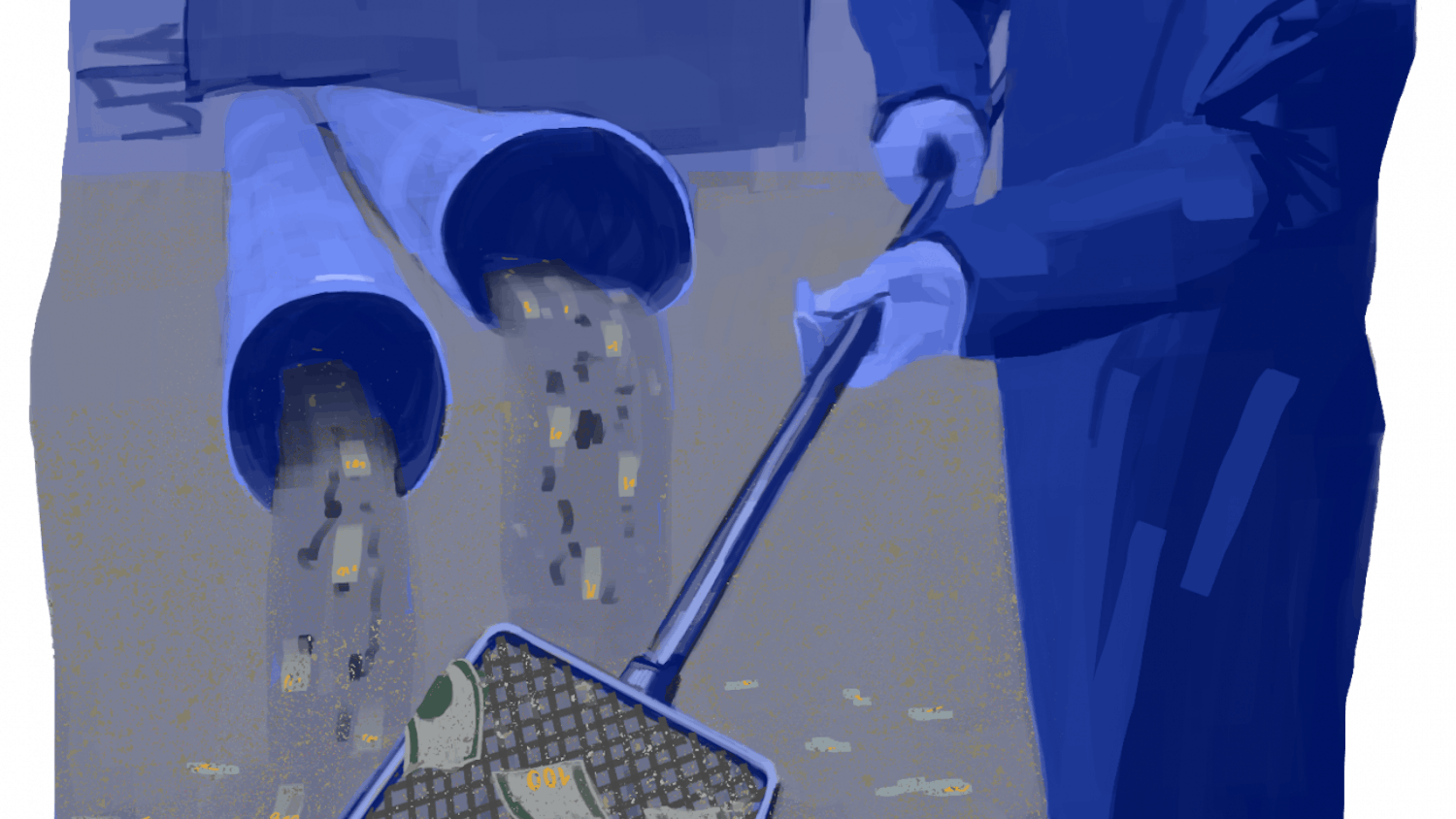Last October marked another phase in Rhode Island Hall's ever-evolving story. The hall, which was built in 1840, is the fourth-oldest building on the Main Green — and in the fall was rededicated the Artemis A.W. and Martha Sharp Joukowsky Institute for Archaeology and the Ancient World, establishing it as a place dedicated to the study of the past.
Ironically, many of the archaeology students who pass through the sand-colored Greek Revival building's doors and into its state-of-the-art interior are probably unaware of the building's own history and its past life as the campus's hub for scientific study. From 1871 to about 1915, the building was home to Brown's Museum of Natural History, which was called "a world of objects and facts," designed "both to charm and instruct," in a November 1879 issue of "The Watchman," a Boston publication.
The museum's extensive collections, which included mounted birds and mammals and cases of anthropological exhibits, were the result of one man's work — the museum's curator, John Whipple Potter Jenks, class of 1838.
Jenks' adult life began and ended at Brown. He came to the University at the age of 16 and died at the age of 75 at the steps of the museum where he spent many years of his career. He lived and breathed science in an era of Darwin, and became as much of a fixture on campus as the museum itself. While he dedicated his life to science and the study of the natural world, nothing of his mark remains on the building that once housed his life's work.
A shooting star
Jenks was born in 1819 in West Boylston, Mass. The sixth child and eldest son in his family, Jenks lived a quiet, small-town life.
In Jenks' unpublished autobiography, he recounts one instance where his love of the natural world showed an early spark. In 1833, the self-proclaimed "student of science" woke up to find a meteor shower streaking across the sky above his home.
"The whole atmosphere was as full of meteors as of snowflakes in a snowstorm," Jenks wrote, describing brilliant colors lighting up the sky. Excited by what he saw, Jenks rushed through his home to wake his family, and then proceeded to shout to every open window in the town.
As he called out to each window, his neighbors poked their heads out of their windows and walked out into the street to view the sight. For that one brief moment, Jenks shared his love for the natural world with his neighbors and family — a memory that would stay with him for the rest of his life, he wrote.
"Fifty years later I received the thanks of some citizens for arousing them from their slumbers to see the glorious sight," Jenks wrote.
That same year, Jenks was accepted as one of the 45 members of Brown's class of 1838 — the youngest member of his class.
Jenks' undergraduate years at Brown were filled with hard work, as he held down odd jobs — including wheeling compost for President Francis Wayland from the hog pen and cow yard where Wilson Hall now stands to Wayland's personal Prospect Street garden — to pay for his room and board. He took a class on natural philosophy with future University President Alexis Caswell that would later influence Jenks' own work as an educator.
At 19, Jenks graduated ninth in his class and spent two years teaching in Georgia before marrying the well-connected Sarah Tucker.
Because of his new family connections, Jenks took over the failing Pierce Academy in Middleborough, Mass., which was founded by Tucker's grandfather. Under his tenure, the school expanded from 15 to 300 students, and Jenks began the work that would form the foundation for his contributions to Brown's science curriculum in the second half of his life.
The path back to Brown
At Pierce, Jenks assembled a cabinet containing specimens like dried plants and bird skins to teach his students about natural history. To expand his knowledge of natural science, Jenks enrolled in a taxidermy course in Boston, and embraced the art of stuffing animal hides as a new hobby. Jenks woke up each morning before class to obtain new specimens, ignoring the advice of his instructor to "preserve (his) first and (his) hundredth bird and throw away all the rest," he wrote.
Jenks soon amassed a large collection of specimens, and increased his knowledge of zoology by going out on excursions with Harvard professor Louis Agassiz to study turtle embryology. For the study, Jenks "planted" 600 different varieties of turtle eggs in his garden to study their incubation periods. At the end of the experiment, Jenks found a growing interest in living the life of a scientist and gained a new kindred spirit in Agassiz.
By the 1870s, an emphasis on private education shifted to public schools across Massachusetts. Looking for a career change, Jenks wrote to Caswell, his professor-turned-President, describing his displeasure with what he perceived to be Brown's outdated science curriculum.
In the 1871 letter, Jenks wrote, "While it is one of the oldest Institutions in the country, there is not one hardly half as old that has not better facilities for illustrating any branch of Natural Science and I am positively ashamed of my Alma Mater."
In the letter, Jenks asked to return to Brown in order to establish a museum on campus, asking Caswell for a display room consisting of "three cases of 23 and a half feet long, and five and a half feet wide" for specimens that Jenks would collect himself.
Caswell wrote back to Jenks informing him that the University did not have enough funding for his display. Jenks replied with a promise that if Caswell could raise enough funding in two weeks to pay for two cases of minerals, fossils and shells, in addition to one for mounted birds, he would fill the cases at his own expense.
Caswell agreed, and Jenks spent his remaining three weeks of his time at Pierce shooting birds and trapping mammals.
The Corporation did not raise any money for the museum's installation at Rhode Island Hall, but Caswell managed to raise $110in private donations, enough to hire Jenks without a title and pay him "the lowest Professor's salary in the institution," Jenks wrote.
A one-man show
Jenks increased the fledgling museum's collections almost single-handedly. He procured a large collection of 4,125 bird skins — giving 1,500 of those to his friend Agassiz — built cases, mounted birds and mammals and picked out quirky finds, including a large-scale stuffed lioness that he won in an auction, according to his autobiography.
Though small, the museum was aesthetically pleasing. Photographs housed at the John Hay Library show fish skins lining the ceiling above long cases of stuffed birds and butterflies. There was also a back room filled with stuffed sharks and stingrays on one side, and stuffed camels standing in front of a giant stuffed walrus on the other. A domed arch connected the rooms, with big block letters reading "Jenks Museum of Zoology."
In the south corner of Rhode Island Hall's basement, Jenks created a dissecting room, where he taught students taxidermy. Jenks would continue to add to the museum's collection, describing in his autobiography yearly trips to Florida, where he gathered new specimens.
Jenks found some obstacles in funding throughout his time at Brown, but was granted one special wish in 1890 — the University named the zoology portion of the museum after him. Jenks would later use his own money to fund a skylight and install 30 new cases.
The twilight years
Jenks' heart was never far from the museum he created, even in his final years. In a 1893 letter to the Corporation, he willed $2,822.26 to the museum to arrange "the Zoological and Anthropological specimens in separate rooms, and each in cases more especially adapted to their respective characteristics."
A year later, Jenks was not in the best of health. On September 26, 1894, he walked across campus to Rhode
Island Hall with "sluggish steps," according to Reuben Aldridge Guild during Jenks' 1895 memorial address held at Brown.
At 3:00 p.m. passersby shouted to each other on the Main Green as they found Jenks lying unconscious on the steps of Rhode Island Hall. Jenks had died of heart failure, sprawled in front of the museum that housed his life's work.
A faded legacy
The museum floundered after Jenks' death. Mismanagement and growing disinterest in the natural sciences let the museum fade on the University's list of primary concerns.
According to the 1900 President's report, a fire did considerable damage to the west room of the museum, which gave the University an excuse to remove some of Jenks' old displays.
By 1915, the growing biology department moved out of Rhode Island Hall and into Arnold Laboratory, and the hall was named the new home of geology and philosophy, according to the President's report of 1915.
Jenks' museum was now no more. His collections were stored in various locations around campus, but the University searched in vain for a permanent home for his specimens.
What would happen to the museum? In a twist of fate, the University stayed true to its promise that the collection would stay on Brown property. According to the President's report of 1915, 92 truckloads of Jenks' prized collections were transferred to a dump on the banks of the Seekonk River — land that was owned by the University.




